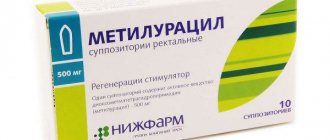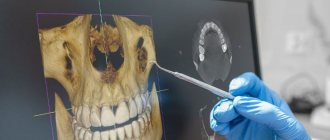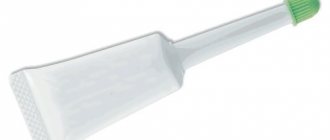home
/
Articles
/
How to give yourself an enema if you are constipated?
A cleansing enema is a useful procedure that will help a person improve his condition quickly enough, without resorting to any medicinal methods. Enemas are in demand both among people with regular bowel retention and among those who are actively dieting, because the process ensures cleansing of the intestines from toxins.
However, the benefits of rectal lavage are observed only when a person does everything correctly. How to give an enema yourself? Is this real or will I have to turn to professionals? Our article will tell you everything.
When should an enema be used?
Cleansing the intestines may be necessary both to prepare for further medical procedures and to facilitate the act of defecation. Among the main indications for performing an enema:
- prolonged constipation (3 or more days);
- preparation for x-rays of the gastrointestinal tract, pelvic organs - urinary and reproductive systems;
- preparation for rectal endoscopy;
- immediately before birth;
- preparation for any abdominal operations;
- preparation before a visit to the proctologist.
It is recommended to rinse the rectum before administering a medicinal or vitamin enema to ensure good absorption of drugs and microelements.
Patients are often interested in how to perform an enema themselves, so that they do not have to call a specialist or go to the hospital. But in some cases, you cannot do without consulting a doctor, because even such a useful procedure as rectal lavage has a number of contraindications:
- stomach and intestinal bleeding;
- hemorrhoids and anal fissures;
- colon cancer;
- prolapse;
- the first 5 days after surgery on the gastrointestinal tract.
If you are not sure that a cleansing enema is safe for you, it is better to postpone the procedure until a professional arrives. By calling MedInHome specialists, you ensure that any manipulations are carried out at the highest level. In addition, all services are anonymous - only you and he will know about the doctor’s visit.
Constipation: definition and types
Constipation refers to difficult or incomplete bowel movements and lack of regular bowel movements. In adults and children over one year old, defecation normally occurs daily, 1–2 times a day. In some cases, the frequency of bowel movements is considered normal once every 2 days, but subject to painless, free, complete and regular bowel movements. For children under one year old, the frequency of stool can vary widely - from 1 time per day to the passage of stool after each feeding. The nature of bowel movements and the density of stool in infants depends mainly on the type of feeding (natural, mixed or artificial).
The following conditions are considered signs of constipation:
- stool retention (no bowel movements for 48 hours or more);
- less than 3 bowel movements per week;
- passage of hard feces;
- pain or difficulty during bowel movements (need to strain);
- a feeling of incomplete bowel movement after passing stool.
There are acute and chronic constipation. Acute ones occur one-time and more often have a clear connection with provoking factors (inadequacies in nutrition, violation of the drinking regime). Chronic constipation worries the patient regularly, and this diagnosis is made if the symptoms of constipation persist for 3 months.
Up to contents
What types of enemas are there?
According to the final purpose of application, a number of procedures are distinguished:
- cleansing enema - used for intestinal obstruction and severe constipation, as well as for the purpose of detoxifying the body after food poisoning (the injected solution must be excreted along with the feces);
- therapeutic enema - small-volume rinsing (usually up to 100 ml), when solutions of medicinal substances, plant decoctions and biologically active preparations are introduced into the intestine (kept inside for up to half an hour, usually must be absorbed);
- vitamin enema - administration of vitamin solutions when oral administration does not achieve the desired effect;
- nutritional enema is a procedure for seriously ill patients; a solution in a volume of up to 1 liter is administered dropwise, followed by absorption by the intestinal walls.
If we classify the procedure according to the amount of fluid administered, then we distinguish:
- Microclysters are a small volume, usually 5-100 ml of some medicinal solution.
- Standard enemas for rinsing - the volume of liquid ranges from 1 to 2 liters.
- Siphon enemas provide cleansing not only of the rectum, but of the entire intestine as a whole. The total volume of injected liquid can exceed 15 liters, but the solution is not poured in immediately, but in parts. During breaks, the patient empties.
When thinking about how to give an enema to yourself, patients usually stop at rinsing with water. We have already talked about another group, medicinal enemas, but there are also solutions with different compositions:
- soap enemas - relevant for constipation, as the liquid activates intestinal motility and stimulates the waste of feces;
- glycerin enemas - similar to soap enemas, have a good effect on peristalsis;
- salt enemas - also called hypertonic, when the patient is injected with a solution of table salt and magnesium;
- oil enemas - the procedure is performed using organic oils, usually as a protection for the intestinal mucosa before other types of manipulation.
There are also soda and sour enemas, and in the past, surgeons used “fire” enemas - a mixture of glycerin, hydrogen peroxide and soapy water, which helped to start the intestines even in a patient with complete atony.
For some helminthic infections, an oxygen enema is used, when a small amount of air enriched with oxygen is pumped into the patient’s rectum. Some types of parasites cannot tolerate high concentrations of oxygen, which is why helminthiasis is eliminated in this way.
And, of course, enemas differ in the temperature of the injected liquid:
- cold (from zero to room temperature);
- cool (23-26 degrees);
- warm (corresponding to the temperature in the rectum - approximately 37.1-37.5);
- hot (from 40 to 43 degrees, above 45 is prohibited, as this can cause a thermal burn to the surface of the mucous membrane).
Causes
Reasons causing stool retention:
- errors in nutrition (lack of liquid foods in the diet, passion for fried, spicy foods, frequent or large quantities of eggs, semolina, potatoes, rice, sweet pastries);
- exhausting diets;
- insufficient fluid intake per day (less than 1 liter);
- a sedentary lifestyle and prolonged bed rest help slow down intestinal motility;
- constipation with hemorrhoids in an adult can be caused by psychological fear of defecation, as it is accompanied by pain;
- old age - according to statistics, 80% of people over 70 years old suffer from this problem;
- constipation during pregnancy often occurs due to the influence of the hormone progesterone on the digestive tract; this hormone suppresses intestinal motility;
- increased gas formation - often when the patient has flatulence and constipation, only gases come out;
- bowel disorders can be caused by intestinal tumors, as well as adhesions after operations of any complexity on the abdominal organs (including laparoscopic);
- taking certain medications—opioid medications, antidepressants, some medications for hypertension and epilepsy;
- Hirschsprung's disease in children - with this disease there is no normal innervation of the intestine, as a result of which peristalsis and physiological movement of feces do not occur;
- Also, constipation in a child can be caused by feeding artificial formulas.
- oncological disease.
How to give an enema correctly?
It is important to understand that each type of enema implies certain rules of use.
Regular "pear"
Probably everyone has the simplest rubber bulb. It is the one that is most often used for cleansing the rectum. The procedure is carried out in the bathroom for greater convenience. What do we have to do?
- Prepare the water: boil and cool to room temperature, maybe a little warmer, around 37-38 degrees.
- Wash and dry the pear. Fill it with water, lubricate the tip with Vaseline and gently insert it into the anus.
- The strength of the jet and the speed of liquid injection can be adjusted independently.
- Once the contents have been completely inserted, you should wait a few minutes and then empty.
- Continue manipulations until absolutely clean water comes out of the rectum.
Very often, pregnant patients want to cleanse the intestines themselves after their water has broken, as they are embarrassed to carry out the procedure in the hospital. In such a situation, you should not panicky search on the Internet how to give an enema yourself, because it is much more important to get to the doctor on time and get ready for childbirth than to waste time on any independent procedures - especially since colon lavage is not always necessary for pregnant women.
Classic method with Esmarch mug
Esmarch's mug is a more complicated version of the enema, more often it is used directly in medical institutions. However, the device is on the market, so many patients who regularly suffer from constipation buy it for themselves.
So, how to give an enema yourself using an Esmarch mug? Special educational video from a medical school
There is also a short guide:
- Prepare the water in the same way as with a rubber bulb.
- Fill the mug with boiled and cooled water, and then hang it at a height of about 1 meter.
- Drain some water to release any air in the spout.
- The tip should be lubricated with Vaseline or oil (only vegetable oil is allowed).
- Spread a strong oilcloth on the bed and place a basin next to it. The edge of the oilcloth should hang over the basin in case the patient is unable to retain water.
- You need to lie on your left side and pull your knees to your chest. Gently spread the buttocks and, using rotational movements, insert the lubricated tip into the rectum to a depth of 6-7 cm.
- Turn the tap on the tip. The degree of unscrewing regulates the speed of incoming water.
- Keep track of the amount of water in the mug. It is necessary to close the tap before all the liquid has flowed out, so that air does not enter the intestines.
- When the procedure is completed, remove the tip and lie down for 20 minutes, then you can void.
- An hour after the first manipulation, a second one is performed if the desired result is not achieved.
Modification of Esmarch's method according to Hegar
For this method you will also need an Esmarch mug, but now it is better to carry out the procedure in the bathroom. Stages of intestinal lavage:
- Hang a mug of water and check that there is no air in the spout.
- Lubricate the tip with Vaseline or oil.
- Take a pose on all fours so that your body rests on two knees and one elbow - with your other hand you will control the unscrewing of the tap.
- Insert the tip into the rectum to a depth of 6-7 cm.
- Turn on the water supply, lower your head and shoulders down, and watch your breathing. You need to inhale through your nose and exhale through your mouth - slowly and rhythmically.
- Once all the liquid is in the intestines, close the tap and remove the tip.
- It is more difficult to retain water than with the previous method, so it is recommended to wait no more than 10 minutes. The easiest way to spend this period of time is lying on your back; the urge is less pronounced.
- After defecation, at least 40 minutes must pass before repeating the procedure.
All three methods, when performed correctly, should not cause pain or discomfort.
Water enema or Microlax – which is better?
There is probably no definite answer to this question - the choice always depends on the specific situation. To help you make a choice, we list the pros and cons of each of these methods.
Water enema - pros and cons of use
Advantages:
- A safe method of cleansing the intestines (if carried out carefully and following the instructions).
- Effectively cleanses feces.
- For severe constipation and large hard lumps, exposure to water is the most effective method, since medicinal microenemas may not be effective.
- Low financial costs. To carry out the procedures, you need to buy an Esmarch mug once and use it many times over many years.
Flaws:
- Giving yourself such an enema can be a difficult task, especially if you feel unwell, are very pregnant, have musculoskeletal disorders, or even just have insufficient flexibility in your body. Because of this feature, the procedure can take a long time.
- For some people, this type of procedure causes a feeling of fear or strong hostility.
- Bursting pain and other unpleasant sensations often occur.
- During defecation, the water does not come out completely; some of the liquid remains on the inner walls of the rectum. Therefore, a person constantly feels a false urge to defecate, and with each attempt to empty the contents of the intestines, liquid comes out in small portions, thereby creating certain inconveniences.
- The tip of the Esmarch mug requires disinfection after each use to avoid accidental infection through microscopic damage in the skin of the anus. And if several people in a family use one Esmarch mug, then each family member should have their own tip.
Microlax - pros and cons of use
Advantages:
- A safe product recommended even for newborn children, pregnant and lactating women, and the elderly. Of course, in the absence of allergic reactions to the substances contained in the drug.
- There are no bursting pains, since the volume of the gel for a single use is only 5 ml.
- Convenient to use. It is enough to insert the thin tip of the tube into the anus to a shallow depth, squeeze out the gel and carefully remove the tube. Then wait 15 minutes and empty your bowels as usual. If necessary, repeat the procedure using another tube.
- The gel is almost completely thrown out during defecation, so in the future there are no false urges to defecate.
- Easy to use. Almost any capable person, regardless of age, size and health status, can cleanse the intestines on their own, without outside help.
- Sold in almost any pharmacy at affordable prices.
- Each tube is equipped with a disposable tip that does not require disinfection.
Flaws:
- Allergic reactions are possible. When first used, it is recommended to check the reaction by applying a small amount of gel to the elbow area. If an allergic reaction occurs, it will appear within 5 to 30 minutes. In case of a positive allergic reaction, you must immediately take an antihistamine and discontinue further use. To select a different drug, consult an allergist or dermatologist.
- With increased sensitivity, discomfort may occur (itching, burning in the anus or inside the rectum). The discomfort goes away almost immediately after defecation.
- In rare cases, side effects such as abdominal pain and/or loose stools may occur. If these symptoms do not go away on their own within 2-3 hours, you should consult a gastroenterologist. If pain, burning or loose stools are severe, seek emergency medical help.
Reviews from doctors about the procedure
Performing a cleansing enema is what doctors advise for long-term constipation. Of course, you will have to spend a little time figuring out how to give an enema yourself, but the result will be worth it.
Vladimir Pavlovich Kiriyenko, proctologist: “Timely lavage of the intestines quickly improves the condition of patients - there is no point in dragging on to the point of fainting. In addition, when performing manipulations at home, either independently or with the help of calling a doctor, patients do not experience such embarrassment as in the hospital.”
Doctors remind us of the importance of consulting with a professional: the patient does not always know that he has contraindications to the procedure.
According to surgeon A. Markovskaya: “The main obstacle to independent intestinal lavage is ignorance of the optimal volume and temperature of the administered fluid. It is very easy to harm yourself, so avoid self-medication as much as possible. Moreover, nowadays it is very easy to call a specialist to your home.”
Constipation in pregnant and lactating women
Due to hormonal changes in the body of pregnant women, as well as against the background of compression of intestinal loops by the growing fetus during the period of bearing a child, and then during feeding, constipation often appears.
Meanwhile, many laxatives are contraindicated for pregnant and lactating women. Changing your diet and increasing physical activity (within permitted limits) also do not always give a positive result.
For treatment at home and during a stay in the maternity hospital, pregnant women can use MICROLAX®, which is suitable for both the expectant mother and the child. It can be used for a long time, so it is also suitable for combating chronic constipation in pregnant women.
Up to contents
Patient reviews
Patients themselves also often write on forums about their experience of using enemas - some use regular water enemas, some buy special ones with a solution (for example, Enema), while others call a specialist and choose the optimal composition of the liquid with him.
Maria, 25 years old, had her bowel lavaged before going for an endoscopy: “It’s the hardest thing to cleanse yourself properly, you’re always afraid of doing something wrong. She called the nurse and was even surprised that the enema was administered without discomfort. Fast and no problems, I recommend.”
Andrey D. shared another experience, a little less pleasant: “I had to give an enema before a visit to the proctologist, but for me it was the first experience of such a procedure - as a result, a lot of unpleasant sensations and damage to the mucous membrane. The doctor said that coming “unprepared” is not critical, it’s better not to harm the body and ask a specialist for help.”
Christina N. says: “For a couple of years now, my grandmother has been bedridden and moves little—hence the problems with stool. Recently we tried to give an enema with the help of a nurse, the result was excellent, I calmly emptied after half an hour. It’s a good method, and there’s no need to poison an elderly person with laxatives, she already has a lot of pills.”
From their impressions it is clear: constipation cannot always be prevented, because it appears from stress, from travel, and from unusual cuisine. An enema is a simple and affordable way to cleanse the intestines, so there are a lot of positive reviews.
How to properly prepare the site for a future procedure?
Preparing for an enema is an important stage of the procedure.
First of all, you need to find a comfortable lounger or couch on which the patient can sit. The procedure site is covered in advance with a practical, easy-to-clean oilcloth, one end of which is lowered into a basin, bucket or any other container (this is necessary in case the patient is unable to retain the liquid inside himself during enema manipulations).
As mentioned just above, all medical “equipment” must be properly processed. All parts of Esmarch's mug are thoroughly washed inside and out; plastic elements - boil if possible. After this, you can begin preparing the rinsing solution itself.
How to prepare saline and soda solutions
The saline solution gently removes toxic substances and disinfects the intestinal cavity. To prepare a medicinal solution, you need to dilute a teaspoon of kitchen salt in 1.5 liters of water. After this, the resulting liquid is filtered through several layers of gauze and used for its intended purpose.
Soda solution helps soften fecal stones and remove them from the body. To prepare such a medicine for an enema, you should take two tablespoons of baking soda without topping and dilute it in one and a half liters of warm water. For the solution to be as effective as possible, add a tablespoon of glycerin or sunflower oil to the water to soften the intestinal lining.
A solution with the simultaneous use of soda and salt helps a lot. It is also recommended to add oil or glycerin to this cleaning liquid.
You can use a solution of pharmaceutical rehydron to cleanse the intestines, which is prepared according to the attached instructions.
Indications for the cleansing procedure
With the help of a regular cleansing enema, you can quickly and effectively cleanse the intestines of deposits of toxins and toxic substances that lead to intoxication of the body and various diseases. The main indications for performing this procedure are:
- chronic constipation and stool retention;
- planned surgical interventions;
- upcoming birth.
In addition, the cleansing procedure is often carried out for poisoning of varying degrees of severity and before intestinal radiography.
A cleansing enema must be done before medicinal or nutritional procedures that are performed through the rectum.
How to prepare a solution of potassium permanganate
Potassium permanganate is a versatile substance that is used for various medicinal purposes.
A weak solution of potassium permanganate is indicated for poisoning, both for washing the stomach and intestines. To prepare the medicinal composition, you need to dissolve 5-6 grains of potassium permanganate in a small volume of water, and then pour the resulting concentrate into the total volume of liquid for the procedure. First, the solution is filtered through several layers of gauze so that undissolved crystals do not fall on the intestinal mucosa, otherwise there may be a burn.









